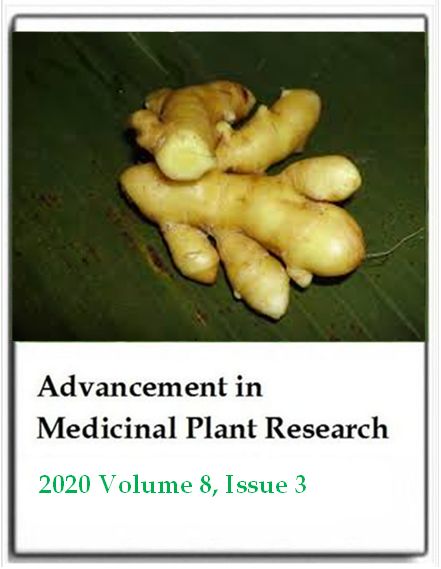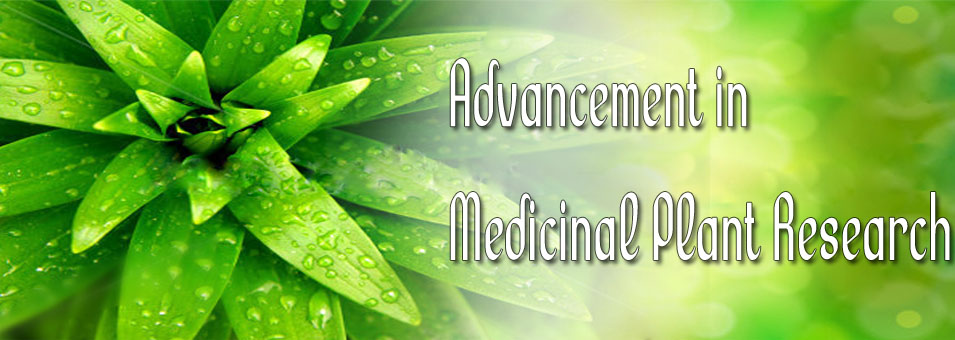Physico-chemical characterization and chemical profile of Curcuma mangga (Valeton & Zijp) essential oils acclimated in Congo-Brazzaville
Kévin Bikindou, Ernest Bitemou, Ghislaine Boungou-Tsona, Houzel-Mampouty Bounkosso, Aubin Nestor Loumouamou, Pierre Chalard and Gilles FigueredoAdvancement in Medicinal Plant Research
Published: July 8 2020
Volume 8, Issue 4
Pages 43-52
Abstract
This research aims to determine the chemical profile of the essential oil of Curcuma mangga. Samples of the essential oils, obtained by steam distillation of the harvested plant material (leaves and rhizomes) at four sites and during three years, were analyzed by GC-FID and GC-MS. The physicochemical characteristics of the volatile extracts, such as the relative density, the acid index, the ester index and the rotary power, were determined according to AFNOR standards. Analysis of the chemical composition shows that the essential oil of the leaves contains mainly ar-curcumene (14.42 to 32.08%), α-zingiberene (3.5 to 16, 79%), β-sesquiphellandrene (5.48 to 14.07%), 1,8-cineole (traces-23.46%) and, to a lesser extent, β-bisabolene (3.25 to 9.11%). The rhizomes are rich in α-zingiberene (11.56 to 33.28%), in β-sesquiphellandrene (14.24 to 20.85%), in curzerenone (traces-12.65%) and in camphor (0.61 to 16.44%). It appears that the chemical profiles with predominant of ar-curcumene for the leaves and predominant of α-zingiberene and α-sesquiphellandrene for the rhizomes, are different from those identified in other countries.
Keywords: Curcuma mangga, chemical profile, ar-curcumene, α-zingiberene, β-sesquiphellandrene, 1,8-cineole, camphor, curzerenone.
Full Text PDFThis article is published under the terms of the Creative Commons Attribution License 4.0

